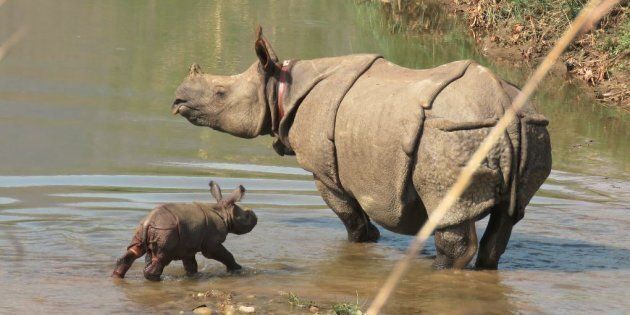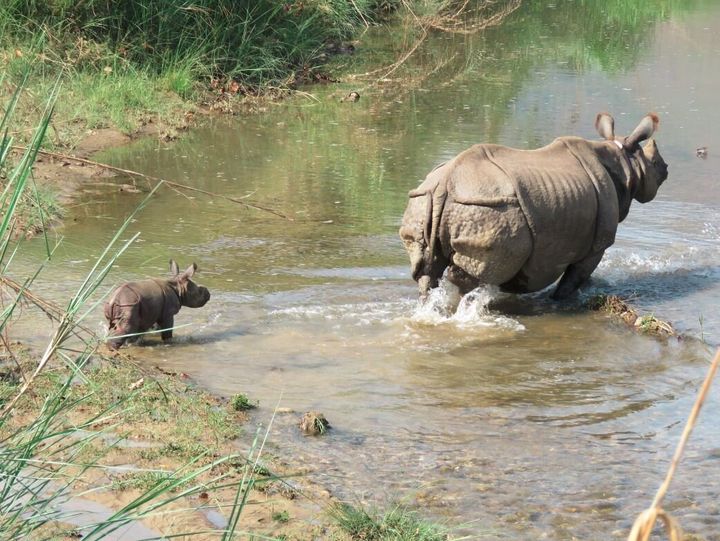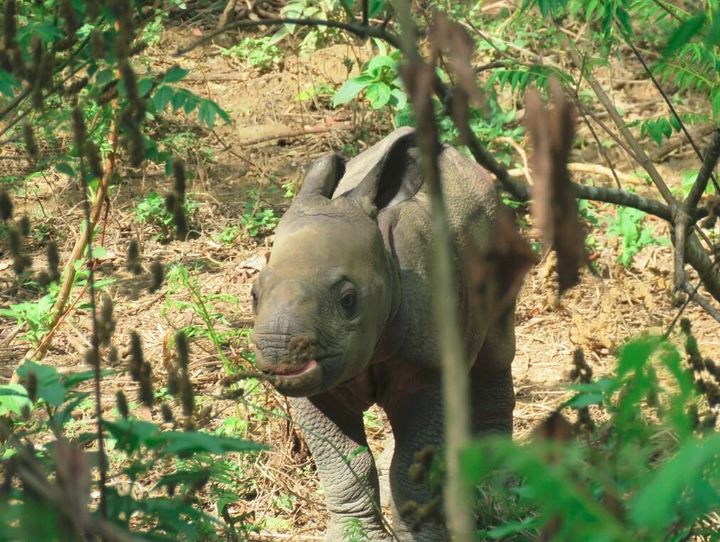
We don't know its name, we don't know if it's a feisty mischievous rebel or a real mummy's boy who loves nothing better than a nuzzle under the belly with part of its mother's anatomy which is less sharp than a horn, but we do know this.
This baby Nepalese rhino calf is the cutest bundle of armour and leathery skin you'll see today, and perhaps this lifetime.

The baby was born just this week in Nepal's Bardia National Park, which is full of grass and rivers and stuff like rhinos like, but mercifully free of things they don't -- like poachers. He doesn't have a name yet so we'll just call him Mr Floppy Ears.
Mr Floppy Ears is an an Asian rhino, a species also known as an Indian or one-horned rhino. The number of Asian rhinos numbers in the wild is dwindling. Between 3,000 and 4,000 remain.
Darren Grover, head of species conservation at WWF Australia, has spent time in Nepal with the local rhino "crash" (the suitably awesome collective noun for a group of rhinos).
Grover told The Huffington Post Australia that the poaching problem peaked about six years ago when a Vietnamese politician said ground-up rhino horn cured his cancer. That story may or may not have been an urban myth. But it was so widely reported that it sparked a rush on rhino horn which was 100 percent real.

"Rhino horn is also said to be an aphrodisiac, a hangover cure and half a dozen other things," Grover said. "But it has no medicinal qualities. It's made of the same stuff your hair or fingernails are made of."
Nepal's military and national park officials have banded together to fight poachers.
"Their efforts really are quite heroic," Grover said. "There has been zero poaching of tiger or rhino in the last two years."
Up until March this year, all of Nepal's rhinos lived in Chitwan National Partk, about four hours south-west of Kathmandu. But Nepalese authorities thought they'd hedge their bets and create a population elsewhere. That's why five Rhinos were translocated to Bardia NP in the country's east. Here's a video of that.
They're clearly loving their new surroundings.
Mr Floppy Ears is rhino number six in the area. And Nepal now has 645 in total.